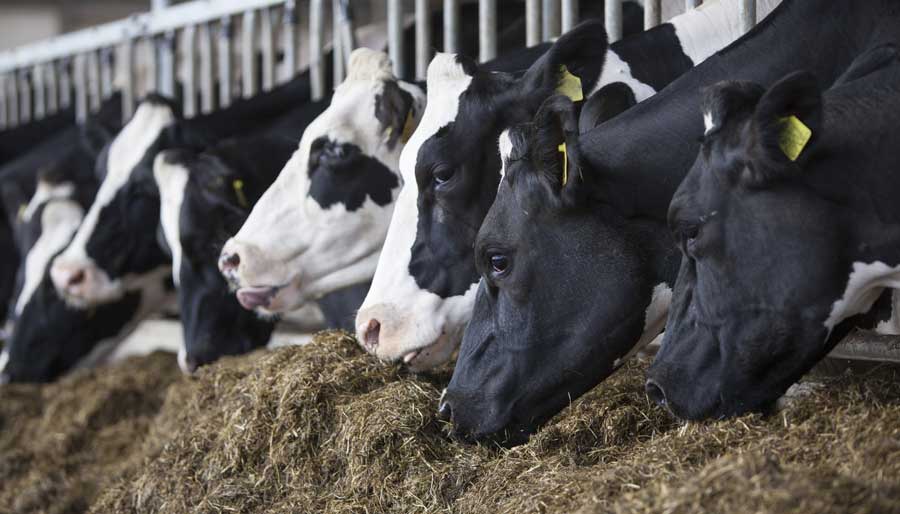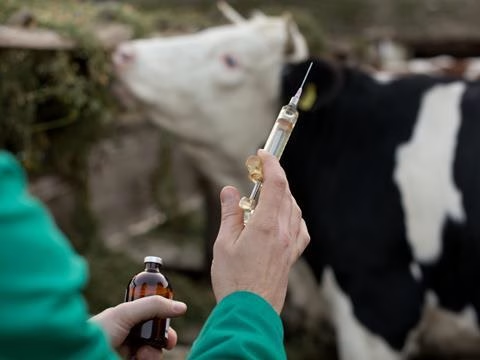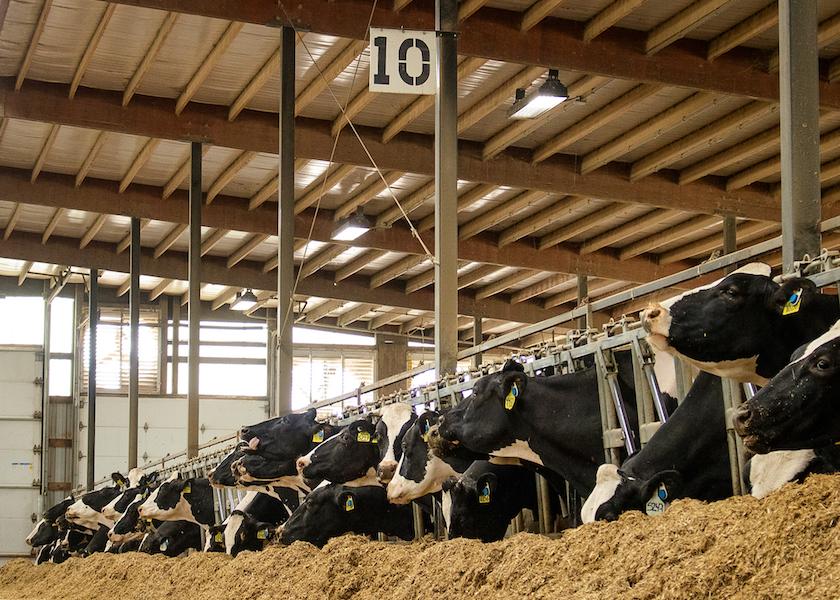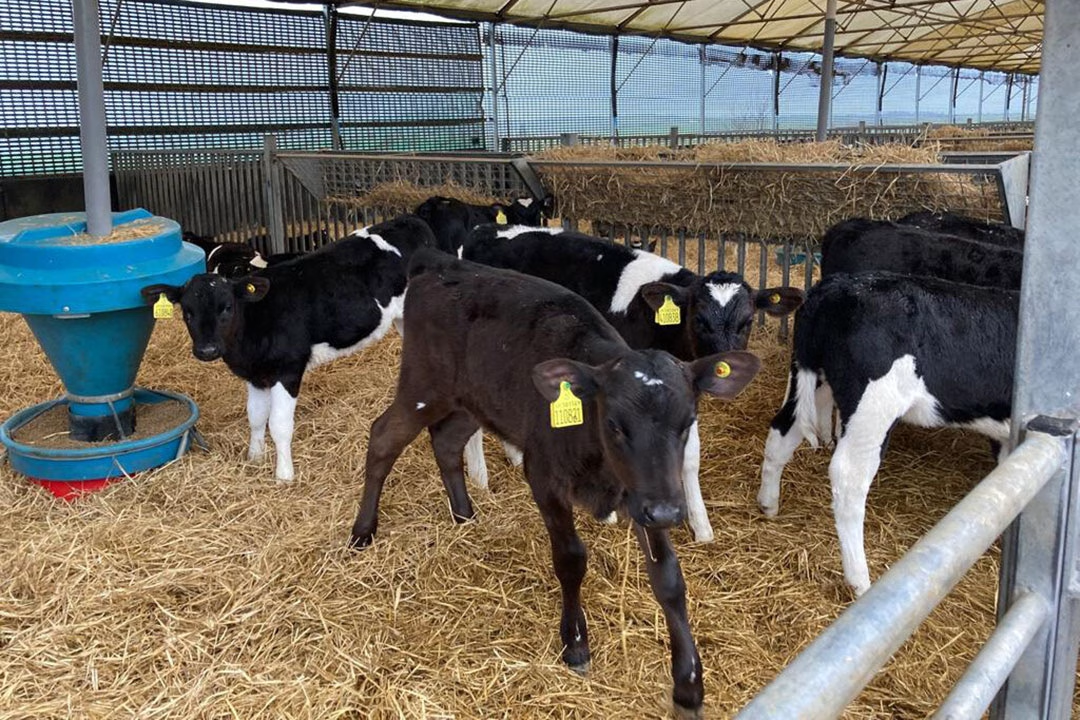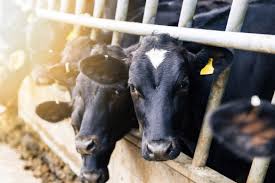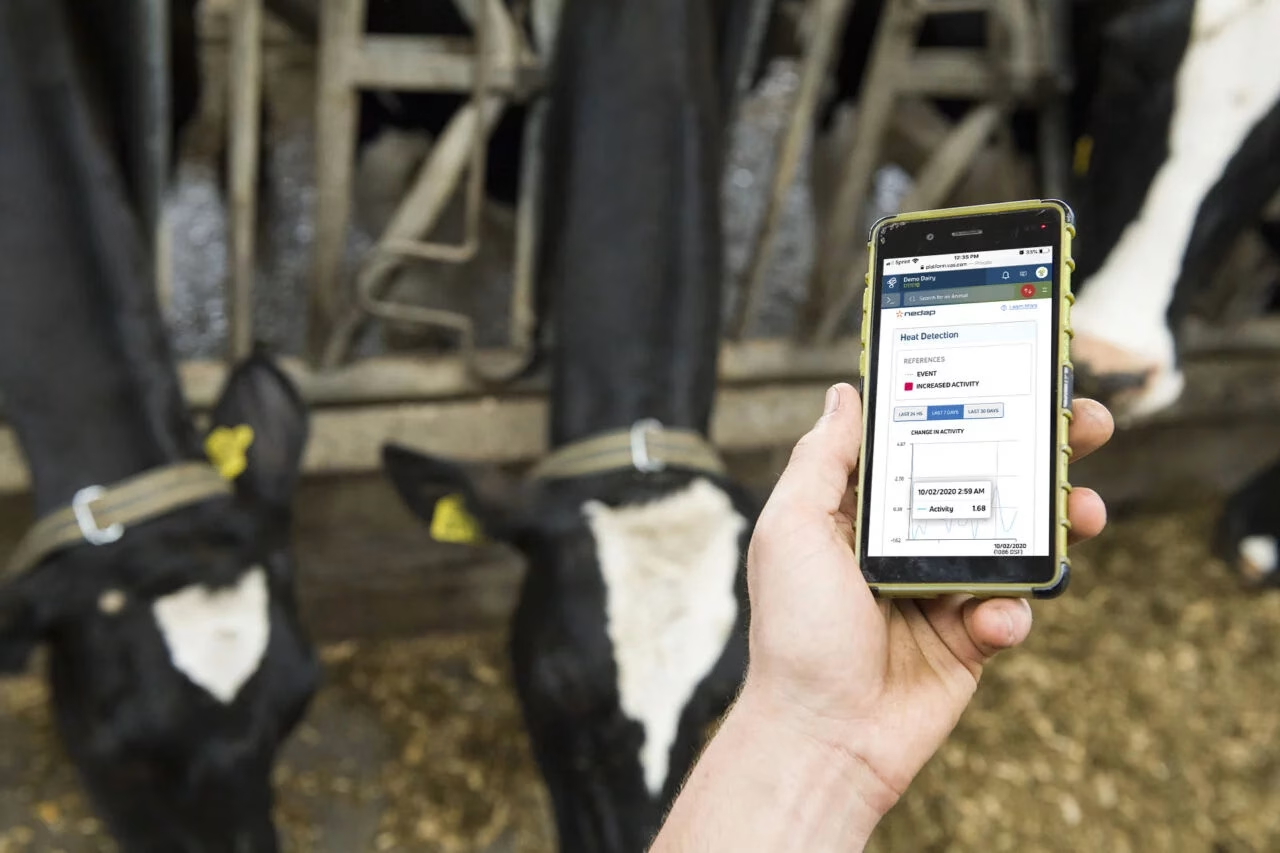Learn how immune activation affects your transition cows. Are outdated ideas limiting your farm’s success? Find fresh insights now.
Do the problems transition cows face come down to just high NEFA levels and low calcium? Think again. It’s time to peel back the layers of entrenched beliefs and shine a light on the hidden puppet master—immune activation. In simpler terms, immune activation is when a cow’s immune system becomes more active, affecting its health and dairy farm profits. Historically overlooked, the immune system’s role during the crucial transition period is increasingly recognized as central to a cow’s health and productivity. When a cow’s immune system is activated, it influences metabolic pathways in ways vital for understanding how we should manage their well-being and output. So, isn’t it time we focus on what truly affects our bottom line?
Unraveling the Transition Tango: Beyond Fat and Calcium
The transition period is crucial for dairy cows, serving as the bridge from gestation to lactation. It involves significant physiological and metabolic shifts as the cow’s body prepares for milk production, demanding substantial changes in nutrient allocation and hormonal adjustments. These alterations are vital for the onset of lactation and challenge the cow’s metabolic stability, underscoring the importance of this period.
Traditionally, the spotlight has been on how effectively a cow can manage the mobilization of adipose tissue. As the cow prepares to lactate, her energy needs surge. If feed intake does not keep pace, she begins to tap into her fat stores, releasing non-esterified fatty acids (NEFA) into her bloodstream. These NEFA are crucial as they provide energy, but excessive levels can lead to metabolic disorders like ketosis.
Then, there’s the concern of hypocalcemia or low blood calcium levels. Calcium is essential for milk production, and the onset of lactation can drop blood calcium levels significantly, leading to what is commonly known as milk fever. A cow’s ability to quickly adapt her calcium metabolism—through dietary adjustments and internal reserves—is critical to sidestepping this disorder and maintaining her health and output.
The combined pressures of adipose mobilization and calcium management make this period precarious. While these traditional views have long shaped our understanding of transition cow health, they are just pieces of a much larger puzzle. This puzzle includes immune activation and its impact on transition success, offering new angles on addressing longstanding daily challenges. For instance, understanding immune activation could lead to changes in feed management or immune-boosting supplements.
Time to Rethink the Transition Woes?
Have you ever blamed increased NEFA, hyperketonemia, and hypocalcemia for all your cows’ woes during the transition period? It’s a belief that’s been drummed into us for ages, like a troublesome melody that gets stuck in your head. However, a thought might make you pause momentarily: What if these metabolic changes are not the villains?
Now, before you dismiss this idea, let’s examine it a little more closely. The industry has been convinced that these factors are the big bads disrupting cow health for years. They’ve been portrayed as the root cause of many periparturient problems, keeping cows from performing their best. But what if we’ve been looking at this all wrong?
Consider this—these changes might be part of a cow’s regular metabolic adjustments. They could be how a healthy cow prepares to handle the incredible demands of milk production. Instead of seeing them purely as the causes of disease, what if we viewed them as signs, markers telling us that a cow is dealing with its new physiological state?
Here is another intriguing angle: Could what we see as a problematic result from immune activation? This is where it gets fascinating. Immune responses and the resulting inflammation are natural parts of a cow’s transition. They can profoundly affect a cow’s metabolism. So, when your cows exhibit these changes, it might reflect underlying immune activity more than anything else.
Consider this: what if high NEFA, elevated ketones, and low calcium are just the tip of the iceberg, representing deeper, natural processes at work? This thought should not just make you pause, but it should also encourage you to rethink your strategies. This does not just shake up a few conventional wisdom points; it fundamentally questions how we understand and, importantly, manage transition cow health, empowering you to take a more proactive role in managing your herds.
The Symphony of Bovine Biology: Embracing Inflammation in Dairy Cows
Dairy cows are not just milk machines but complex creatures dealing with an astoundingly dynamic biological ecosystem, especially during transition. Immune activation and inflammation are not anomalies during this time—they are natural components of a cow’s biology. If this surprises you, it might be due to the traditional tendency to view inflammation with apprehension. But in the dairy world, a degree of inflammation is as regular as sunrise in the morning, highlighting the naturalness of these processes.
So, where does this immune activation originate? During the transition, the cow’s body undergoes a massive shift, akin to a biological symphony, with inflammation playing a significant role in this grand composition. The origins of immune activation are closely associated with critical physiological structures, namely, the mammary gland and the gastrointestinal tract.
The mammary gland, quite understandably, takes center stage. As it prepares for milk production, tissue remodeling needs cleanup. Guess who is called in for the job? The immune response! Not only do immune cells infiltrate to manage this reorganization, but they also guard against microbial interlopers that could lead to infections. This homeostatic inflammation ensures the body’s symphony continues without an unwanted encore from pathogenic bacteria.
Down south in the digestive arena, the gastrointestinal tract doubles as a nutrient absorption hub and a pathogen barricade. During the transition, stressors or diet changes can upset the delicate balance, allowing some of the wrong bacteria to escape and cause trouble. However, the immune system is like an old-time sheriff. It responds to the invasion, sometimes with guns blazing, in the form of inflammation.
While it might not be all sunshine and rainbows for the cow, this inflammatory response is part of the survival toolkit. It’s about maintaining and adjusting equilibrium during one of the most challenging times for these bovines. Understanding this can shift how we manage our herds, viewing a certain level of inflammation not as a foe but as an ally doing its job—ensuring cows transition smoothly into their milk-producing destiny.
Maestro of Metabolism: Dancing to the Immune System’s Beat
As dairy farmers, we are all too familiar with the dazzling dance of metabolic and mineral adjustments in our beloved bovines. Immune activation is like the maestro orchestrating unexpected beats in this complex waltz. When the immune system kicks into high gear, it pulls glucose from the usual players and redirects it toward its mission-critical operations. This redirected glucose finds itself a new home in leukocytes, which need energy to fight off any lurking pathogens.
This glucose grab impacts feed intake, too. Immune activation tends to curb appetite, leading to reduced feed intake. It is a universal response across animal species, including our dairy cows. You may notice your cows turning their noses up at the feed trough, which can set off a cascade of energy balance issues if not appropriately managed.
Now, let us talk about calcium. Immune activation induces hypocalcemia—that frustrating drop in circulating calcium levels—which can hamper cow health if it persists unchecked. However, here is the kicker: cows display remarkable metabolic flexibility amid this mineral upheaval. They leverage this flexibility to prioritize what they do best—producing milk.
How do they do it? By smartly redirecting energy resources, mainly glucose, towards the mammary glands, cows ensure milk synthesis remains a top priority. Insulin resistance in tissues like muscle and adipose allows cows to spare glucose, channeling it directly into milk production. It’s a biological tango in which every step seems perfectly choreographed to maintain the milk flow, even when resources are scarce.
This capacity for metabolic flexibility exemplifies how adept cows are at balancing the demands of immune response and milk production. So, while immune activation may disrupt the usual metabolic rhythm, cows are hardwired to navigate these challenges with a grace that keeps milk synthesis front and center.
Rethinking the Sacred Cows: Are NEFA, Ketones, and Calcium the Real Culprits?
It is time to highlight the traditional thinking linking NEFA, ketones, and calcium with poor health outcomes in our beloved dairy cows. Over the years, these associations have become agricultural gospel, often regarded as direct culprits behind metabolic disorders during the transition period. But let’s take a step back and reconsider: Are these components truly causative, or have we been placing blame without sufficient evidence?
Most research on these connections relies on observational studies, where correlation masquerades as causation. However, the flaw is that these metabolites are not proven to be the direct agents of harm. Sure, we see them arise when health falters, yet assuming they are the cause might be akin to blaming firefighters for starting fires because they are seen at the scene.
Consider immune activation-induced hypophagia. This decrease in appetite is mainly responsible for the rise in NEFA and ketones. When the immune system kicks into gear, it demands a bigger slice of the glucose pie. As glucose powers immune responses, less is left for the cow’s maintenance, let alone milk production. The animal compensates for this shortfall by mobilizing adipose tissue, releasing NEFA, and converting them into ketones—the body’s backup energy currency.
In this dance, calcium does not escape unscathed, either. Immune signals can disrupt calcium homeostasis, leading to what is often diagnosed as hypocalcemia. However, pushing more calcium without addressing the immune signal can be like mopping water while the tap is still running.
Thus, what we’re witnessing isn’t the harmful effects of these metabolites per se but rather the footprint of a more complex process: the immune system commandeering resources to battle pathogens or heal wounds. It’s time we reconsider these ‘symptoms’ not as causes of disease but as clues pointing toward an underlying immune activation requiring our attention.
Beneath the Surface: Understanding Inflammation’s Hold on Transition Cows
Transition dairy cows face numerous challenges, with pathogenic inflammation playing a critical role in their health dynamics. Let us explore the primary sources:
Uterus
Following parturition, the uterus often becomes vulnerable to bacterial infections. This is due to the natural dilation during childbirth, which can compromise anatomical barriers like the cervix. When the uterine wall is injured or compromised, it releases signals that attract an inflammation-inducing response. Bacteria that exploit this breach drive systemic inflammation, infiltrating the tissues and triggering an immune response. This initial local reaction can ripple throughout the body.
Mammary Gland
The mammary gland is another battleground for inflammation. Dry-off and early lactation are periods of heightened susceptibility to infections, particularly mastitis. Bacterial intrusions, primarily from gram-negative bacteria, activate an inflammatory cascade. Inflammation disrupts local tissue and, through mechanisms like the breakdown of the blood-milk barrier, allows inflammatory mediators to spread, potentially reaching systemic levels.
Gastrointestinal Tract
The gastrointestinal tract, a key player in inflammation, houses many bacteria. When the gut barrier is weakened, as often during stress or poor nutrition, microorganisms or their components can enter systemic circulation. This results in a robust immune reaction that seeks to neutralize these foreign entities, but often at the cost of triggering systemic inflammation.
When combined, these sources significantly contribute to systemic inflammation in transition cows. The body’s attempt to respond to local threats can become a full-body event, impacting not just the immediate areas of infection but overall health and productivity. Addressing these sources can lead to better management and outcomes for transition cows.
Diving into the Depths of Immunometabolism and the Warburg Effect
Let us delve into the heart of immunometabolism and how immune activation leads to a radical shift in a cow’s metabolism, spotlighting a fascinating phenomenon known as the “Warburg effect.” You might have heard of this concept in the context of rapidly proliferating cancer cells—it describes a scenario where cells pivot from their usual oxygen-powered energy production to relying heavily on aerobic glycolysis. This metabolic switch is employed by immune cells, including leukocytes, as they prepare for the front line in the battle against pathogens.
In a healthy animal, most cells typically bank on combining glycolysis, the tricarboxylic acid (TCA) cycle, and oxidative phosphorylation to churn out energy efficiently, producing roughly 36 ATP molecules per glucose molecule. However, when immune cells are activated, like during infection, they increase their glucose consumption manifold despite oxygen, triggering the Warburg effect. Why? It speeds up the energy supply chain—allowing a quick response—and funnels intermediates into pathways that produce the building blocks necessary for cell growth and proliferation, such as nucleotides and amino acids.
Now, you may wonder, what is the ripple effect of this metabolic revamp at a systemic level? Essentially, the entire body pitches in to support this immune skirmish. This redirection of glucose towards supporting immune activation, away from other tissues, like muscle and adipose, affects various bodily functions. The cow’s metabolism is fundamentally altered. Even milk synthesis takes a backseat as the cow’s physiology maneuvers to prioritize glucose for immune use, just as a nation might divert resources to defense during wartime.
These metabolic reprogramming strategies underscore how the immune system commandeers the cow’s myriad physiological processes, illustrating the profound interconnectedness within dairy cows during challenging periods such as transitioning. And here’s a nugget of thought: Doesn’t this reframing suggest we should consider the metabolic shifts not as origins of the transition woes but as essential elements of the cow’s adaptive survival blueprint? We’ve got to wonder—are our cows simply coping as nature intended?
When Immune Activation Steals the Spotlight: Navigating Dairy Cow Dynamics
Immune activation takes center stage in the transition period, and its effects on cow performance are profound. When the immune system is in full swing, it places hefty demands on the cow’s resources, leading to a cascade of effects ripple through several key areas.
Feed Intake
Inflammation triggers a marked reduction in feed intake. While this anorexic state may seem counterproductive, it is a preserved evolutionary response to infection. The decrease in consumption pre-calving exacerbates the negative energy balance that cows experience, precipitating further issues with the energy supply required for milk production and overall metabolism.
Fatty Liver
The impact of immune activation on the liver is also significant. Inflammatory cytokines disrupt hepatic lipid metabolism, facilitating the accumulation of triglycerides and leading to the notorious fatty liver condition. This condition does not just stem from excessive fat being delivered to the liver; it is a compounded issue in which inflammation alters the liver’s metabolic processes, exacerbating fat buildup.
Milk Fever
The connection between inflammation and milk fever is quite striking. During periods of immune challenge, calcium homeostasis is disrupted, leading to hypocalcemia. Although this calcium drop is a protective strategy the body employs to cope with pathogens, it can precipitate milk fever if uncontrolled. Traditionally, milk fever was attributed solely to dietary shortcomings, but it’s becoming apparent that immune responses play a crucial role.
Lastly, reproductive efficiency does not remain untouched by immune activation. Both local and systemic inflammations can impede reproductive processes. For example, retained placenta, often exacerbated by inadequate immune responses, can delay uterine clearance and fertility. Furthermore, inflammation might directly impact hormonal balances and reproductive organ function, delaying return to estrus and affecting overall reproductive outcomes.
In conclusion, the invisible hand of inflammation has a firm grip on various aspects of dairy cow performance. Beyond the physiological adjustments needed to tackle these immune challenges, inflammation underscores the complexity of biological responses during transition. By understanding and managing inflammation, we can refine these outcomes better, ensuring healthier and more productive dairy cows.
NSAIDs: The Double-Edged Sword in Transition Cow Management
When pondering ways to help our dairy cows through the challenging transition period, going straight for interventions like nonsteroidal anti-inflammatory drugs (NSAID) is tempting. They can offer a quick fix for inflammation, which can sometimes be complicated. The use of NSAIDs has shown mixed results. On one hand, they can boost milk yield and offer short-term relief (Farney et al., 2013b; Carpenter et al., 2016). Conversely, too much inflammation can lead to health issues like fever, stillbirth, and retained placenta (Schwartz et al., 2009; Newby et al., 2013). So, what is the ideal approach?
Managing inflammation in transition cows is like walking a tightrope. Too little, and you risk letting diseases take hold. Too much, and you might push your cows towards other health problems. It’s about finding that sweet spot where inflammation aids in healing and adaptation without becoming destructive. This balance might change based on the cow’s parity or the timing of intervention, complicating the matter further (Farney et al., 2013b; Spencer et al., 2020).
A tailored approach focusing on preventive measures might be the key here. Rather than jumping to treatment, consider strategies that boost overall cow health and prevent immune activation in the first place. This might include better management practices, nutritional adjustments, and ensuring a low-stress environment. After all, prevention beats cure, especially when managing something as complex and sensitive as a cow’s immune system. By striking the right balance, you’re not just supporting the immediate health of your cows but investing in their long-term productivity and well-being.
The Bottom Line
As we navigate the complex matrix of transition cow health and performance, it is clear that our traditional paradigms might need revision. The dogmas that have long guided our strategies—focusing heavily on NEFA, ketones, and calcium—may not be the complete picture. Instead, immune activation and the consequent inflammatory responses play a significant role in the challenges cows face during this critical period.
Understanding this new perspective helps us appreciate the intricate dance of metabolism and immunity. It encourages us to consider alternative approaches to enhancing cow welfare and farm profitability. As we pivot from old beliefs, we have a vast opportunity to improve our practices.
We invite you to share your thoughts and experiences. How has this information shifted your understanding of transition cow health? Comment below with your insights, and let us embark on this journey of discovery together. Feel free to share this article with your colleagues and peers who might benefit from a fresh perspective on this pivotal topic in dairy farming.
Key Takeaways:
- The health and performance of transition cows can be heavily influenced by immune activation, which challenges traditional notions that focus primarily on fat and calcium management.
- Inflammation and immune responses are now recognized as everyday aspects of dairy cow biology during the transition period.
- These immune processes can impact feed intake, metabolic hormone levels, and energy balance, all of which play a significant role in cow health and milk production.
- While high levels of nonesterified fatty acids (NEFA), ketones, and hypocalcemia are associated with transition cow disorders, they might not be the direct cause but indicators of underlying immune activities.
- Rethinking strategies to address these issues involves considering how inflammation and immune activation might contribute to metabolic disruptions.
- Researchers suggest that focusing efforts on reducing immune challenges and inflammatory stimuli may improve transition cow health and farm profitability.
- < UNK> Using non-steroidal anti-inflammatory drugs (NSAIDs) in managing inflammation may provide benefits, but the strategy requires careful consideration to avoid adverse side effects.
- A comprehensive understanding of the complexity of transition cow biology necessitates re-evaluating traditional management practices in favor of approaches that integrate immune health.
- Continued research is essential to explore alternative pathways and management strategies that account for immune activation’s role in transition cow outcomes.
Summary:
The intricate dance of dairy cows transitioning from dry to lactating phases extends beyond managing fat and calcium levels. Traditionally, the focus has been on controlling adipose tissue mobilization and hypocalcemia to combat transition issues such as ketosis and milk fever. Yet, new insights suggest that immune activation is pivotal in shaping a cow’s health and productivity. This overlooked player possibly orchestrates the metabolic and calcium balance, challenging long-held beliefs. Understanding these immune-driven dynamics is crucial with the shift from gestation to lactation involving extensive physiological changes. Embracing this knowledge could lead to strategic changes in feed management or the introduction of immune-boosting supplements, offering a fresh perspective in tackling health challenges during critical transition periods.
Learn more:
- Transition Cow Facilities: The Golden Investment for Dairy Farm Profitability
- Transforming Young Heifers to Mature Cows: Boosting Dairy Herd Longevity
- Maximize Your Dairy Farm’s Profit: Insights from the 2021 Nutrient Requirements Report
 Join the Revolution!
Join the Revolution!
Bullvine Daily is your essential e-zine for staying ahead in the dairy industry. With over 30,000 subscribers, we bring you the week’s top news, helping you manage tasks efficiently. Stay informed about milk production, tech adoption, and more, so you can concentrate on your dairy operations.







 Join the Revolution!
Join the Revolution!
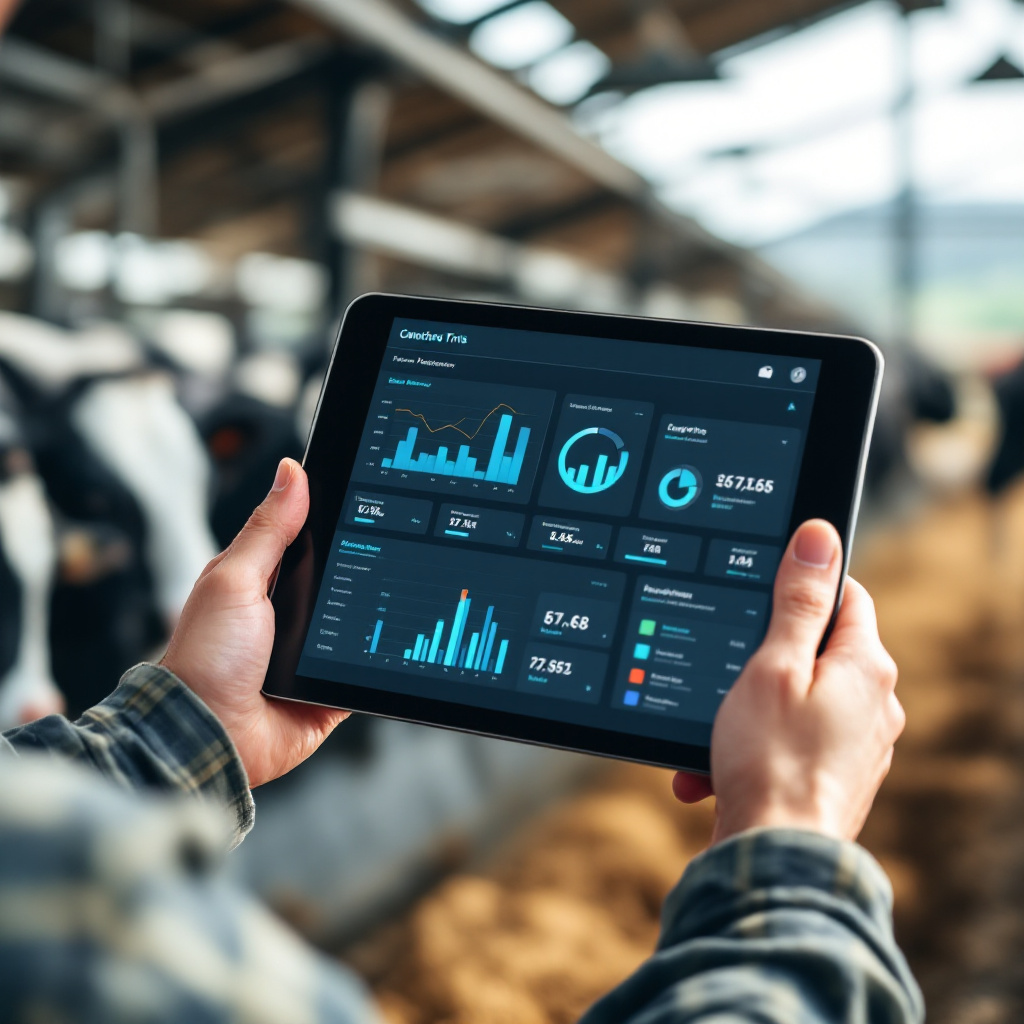
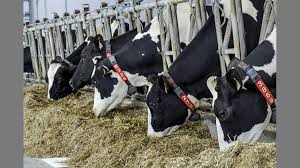


 Download our Dairy Farmers Guide to Stress-Free Calvings
Download our Dairy Farmers Guide to Stress-Free Calvings